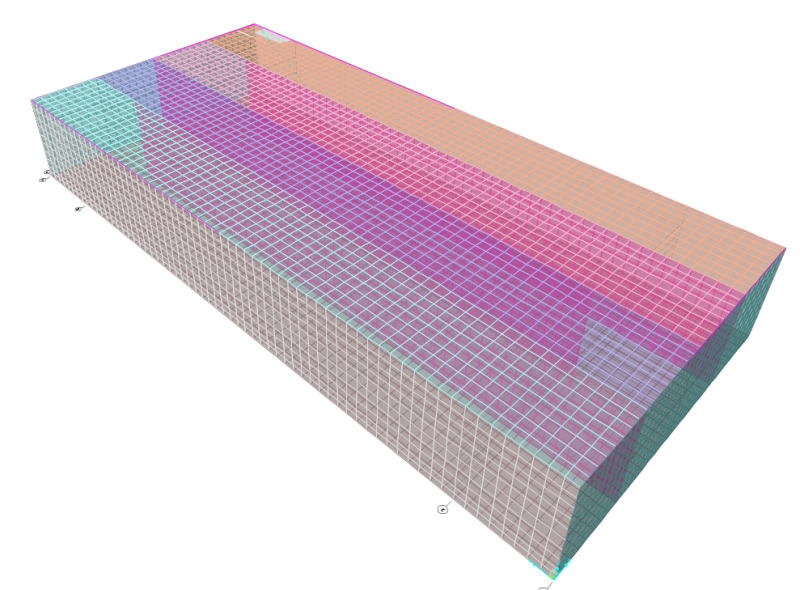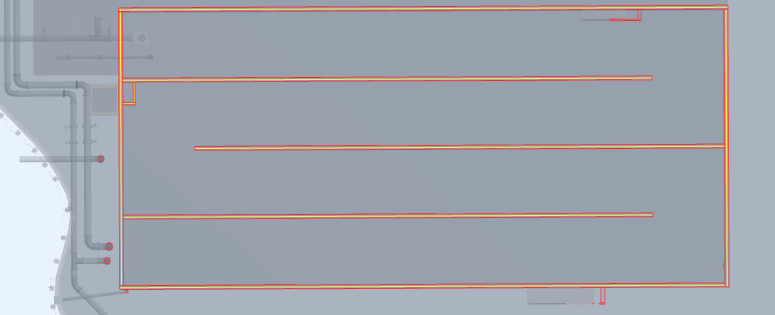Hi all, I am working on the design of a RC water tank, and I need your help...!!
Thanks in advance!!
Size and Structural Form
RC Rectangular Water Tank
- Designed as a Rigid Box Structure, as the Roof, Base & Walls are all monolithically connected
- Size of the Tank = 68m (Length) x 30m (Width) x 9m (Height)
- Thickness of Roof, Base, Walls = 0.4m

Baffle Walls
- 3 Baffle Walls inside the tank to guide the flow of water
- Designed to be Full-height Structural Wall transfering load from the Roof to the Base
- Not Full-length in order to allow water flow

Foundation
- Shallow Foundation sitting directly on Soil
- Base Slab acts as Foundation
Questions
1. What is the structural behaviour of the tank under large lateral loading, like seismic loading?
- The analysis shows that the roof has large in-plane deformation, resulting in high tension at far side, and compression at near side.
- The behaviour is similar to a beam sagging under UDL (compression at top; tension at bottom).
- The Roof does not act as a rigid diaphragm, but a flexible one.
- I reckon it is the actual behaviour, as the roof and the walls have same thickness, yet the roof has a much longer span (68m) while the wall is just 9m tall. The in-plane stiffness of the Roof should be smaller than the Walls. Given the smaller relative stiffness, the roof is flexible.
- To be clear, I used Area Spring (z) and Soil Spring (x & y) at Base Slab in SAP2000, not sure if it affects the result???
2. Large Axial Loading in both direction on Roof
- The analysis shows that the roof has large axial loading in both lateral direction (x & y).
- The results are similar in Walls.
- Since the long size of the tank is 68m, it is designed as column, it must be slender and will fail by second order effect...
Thanks in advance!!
Size and Structural Form
RC Rectangular Water Tank
- Designed as a Rigid Box Structure, as the Roof, Base & Walls are all monolithically connected
- Size of the Tank = 68m (Length) x 30m (Width) x 9m (Height)
- Thickness of Roof, Base, Walls = 0.4m

Baffle Walls
- 3 Baffle Walls inside the tank to guide the flow of water
- Designed to be Full-height Structural Wall transfering load from the Roof to the Base
- Not Full-length in order to allow water flow

Foundation
- Shallow Foundation sitting directly on Soil
- Base Slab acts as Foundation
Questions
1. What is the structural behaviour of the tank under large lateral loading, like seismic loading?
- The analysis shows that the roof has large in-plane deformation, resulting in high tension at far side, and compression at near side.
- The behaviour is similar to a beam sagging under UDL (compression at top; tension at bottom).
- The Roof does not act as a rigid diaphragm, but a flexible one.
- I reckon it is the actual behaviour, as the roof and the walls have same thickness, yet the roof has a much longer span (68m) while the wall is just 9m tall. The in-plane stiffness of the Roof should be smaller than the Walls. Given the smaller relative stiffness, the roof is flexible.
- To be clear, I used Area Spring (z) and Soil Spring (x & y) at Base Slab in SAP2000, not sure if it affects the result???
2. Large Axial Loading in both direction on Roof
- The analysis shows that the roof has large axial loading in both lateral direction (x & y).
- The results are similar in Walls.
- Since the long size of the tank is 68m, it is designed as column, it must be slender and will fail by second order effect...
